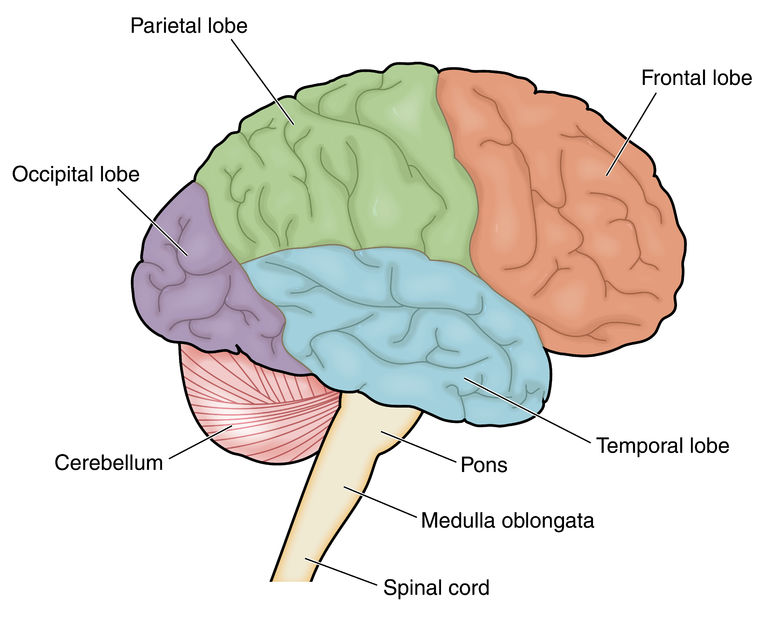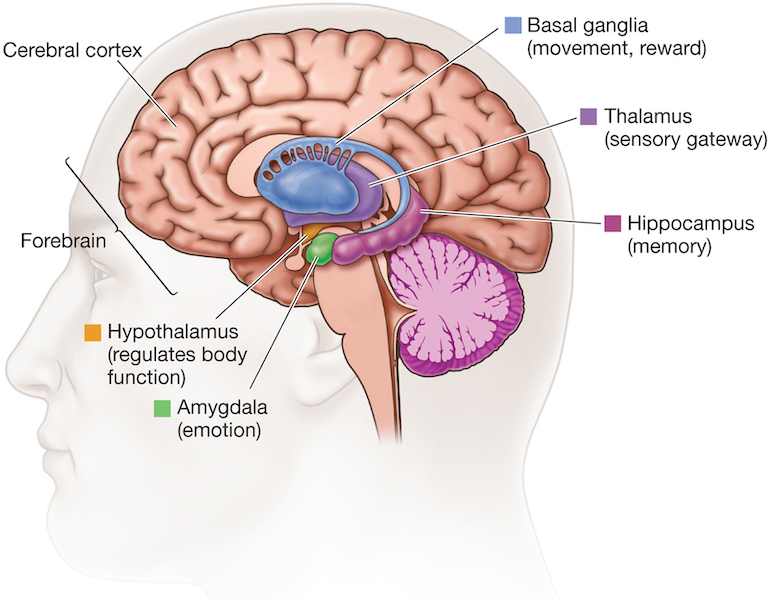What Does the Brain Look Like?
Episode #1 of the course Understanding your brain by Betsy Herbert
Welcome to this course on understanding your brain!
My name is Betsy, and I’m a recent neuroscience graduate with a burning desire to help enlighten others as to the workings of their mind.
Since you’re here, I’m assuming you already appreciate the magnificence of your brain and its role in directing your day-to-day life. But the brain is a tricky thing and for most people, understandably shrouded in mystery.
Throughout the next ten lessons, I aim to unravel some of this mystery, to shed some light onto the black box of the brain, revealing what is already understood and paving the path for you to explore what is still unknown.
We’ll start by building a mental picture of what we’re dealing with. If I ask you to imagine a human brain, what do you see? A walnut-looking lump of fleshy tissue? That’s a good start. We’ll begin there.
Visible Structures
The cerebral cortex. What you’re seeing when you picture a brain is the cerebral cortex, the largest and outermost layer of the brain. This layer houses all the functions that “make us human”: perception, language, decision making, analytical thinking, consciousness, and such. The two sides of the walnut are the left and right cerebral hemispheres, which are each divided into four lobes: the frontal, parietal, temporal, and occipital. Their roles are as follows:
• frontal: cognition, working memory, control of movement
• parietal: sensation of external stimuli and body position
• temporal: memory, emotion, hearing, speech, language comprehension
• occipital: vision

The cerebellum. In your mental image, is there a little bulge at the base of the brain? That’s the cerebellum, Latin for “little brain.” It’s highly dense and convoluted in structure, resembling a cauliflower. It plays a role in fine-tuning and refining our most complex movements—for example, pressing a small button on our touch screens.
Brainstem. How does the brain connect to your spinal cord? Via the brainstem, a structure divided into three parts: the medulla, pons, and midbrain. These control the most primitive, vital functions of the body, such as breathing and heart rate, as well as serving as a highway for signals to enter the other brain areas. Because the brainstem evolved earlier in evolutionary history, it’s sometimes known as the “reptilian brain.”
Hidden Structures
From the outside, the brain looks like pale mush. When you slice it in half, however, you reveal all sorts of exciting internal structures. Here are a few of the most important:
Thalamus. The thalamus is a central hub inside the brain, serving as a “relay station” or “switchboard” through which all incoming and outgoing signals are routed and directed on.
Hypothalamus. The hypothalamus controls all aspects of internal bodily regulation—things like body temperature, thirst and hunger, sleepiness, stress, and social bonding. It does this by stimulating the pituitary gland to release specific hormones into the bloodstream.
Hippocampus. This is the locus of memory. Both spatial and episodic memories are stored here, so that’s everything from what you ate for breakfast this morning, to your first day of high school, to the memory of how to navigate from the supermarket to your house.
Amygdala. A close ally of the hippocampus, the amygdala is responsible for encoding memories of emotional events and is linked to our propensity to feel fear, aggression, and anxiety.
Basal ganglia. This is a collection of linked-up structures responsible for controlling voluntary and habitual movements. It’s heavily interlinked with the reward signals controlling motivation and addiction, responsible for either initiating or inhibiting your reflexive reach toward that coffee, cigarette, or sugared bun.

There are plenty more brain regions of interest, but we’ll leave it there for today. Hopefully, your mental image of what we’re working with is a little more informed. The main takeaway is that the building blocks of the brain—its cells—are not arranged in an inchoate mush so much as organized into coherent structures whose functions can be isolated and studied.
Tomorrow, we’ll leave the grander structure behind and delve into the microscopic realm, exploring those very building blocks themselves—the brain’s neurons.
See you then!
Betsy
Recommended reading
3D Brain: An Interactive Brain Model
Share with friends

